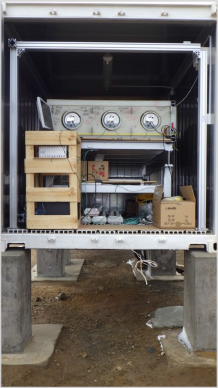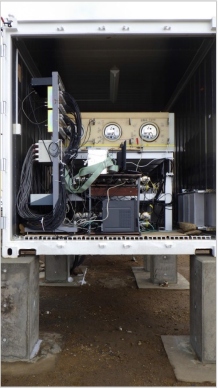About cosmic ray observation at Syowa Station:
In 2018, we started new cosmic ray observation of both muons and neutrons at Syowa Station.
In middle latitudes, cosmic rays move across the magnetic field a lot before entering to the detectors, and we cannot distinguish whether the observed difference is due to the deflection or pure intensity variation.
In high-latitude, at Syowa Station, cosmic rays move across the magnetic field less, and we can measure the cosmic rays coming from the similar directions at two different energies. Also, the similar paths of cosmic rays allow us to investigate the dependence on atmospheric and geomagnetic activities better.
■About count rate
A total of six tubes of neutron monitors are installed at Showa Station. The value provided in this website is a 10-minute value as calculated by the average of six tubes, so that we use the data even if one or two tubes fail to observe. Strictly speaking, the middle tube have counts slightly higher than the others, so the base line may shift by the average.
The muon detector at Showa Base consists of 60 proportional counters (2 m tubes x20 and 1 m tubes x40). One meter tubes x20 are placed at right angles to 2 m tubes x10 to identify the incident position of the muon, and the direction of the muon's incidence is determined by placing two layers of these at the top and bottom. The data provided are the count rates (10-minute values) that are judged as vertical incident.


